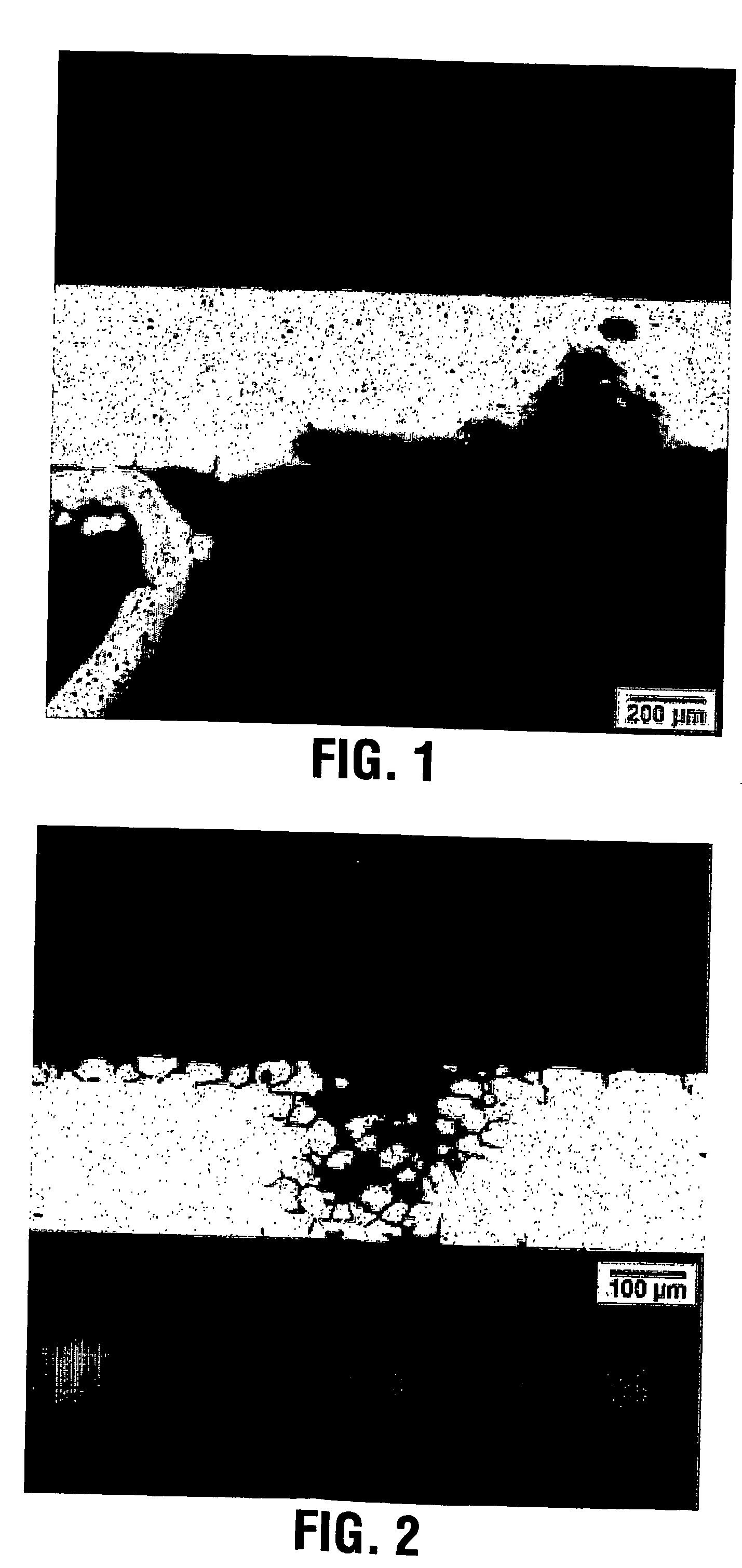Aluminum alloy tube and fin assembly for heat exchangers having improved corrosion resistance after brazing
a technology of aluminum alloy and heat exchanger, which is applied in the direction of chemistry apparatus and processes, light and heating equipment, transportation and packaging, etc., can solve the problems of affecting affecting the corrosion resistance of the aluminum alloy, and the failure of the alloy much faster than the perforation and failure of the fillet, so as to improve the thermal performance of the assembly, slow and uniform corrosion of the exposed fin surface, and good self-anti-corrosion results
- Summary
- Abstract
- Description
- Claims
- Application Information
AI Technical Summary
Benefits of technology
Problems solved by technology
Method used
Image
Examples
example 1
[0033] Tests were conducted using the alloys listed in Table 1 below:
TABLE 1AlloyCuFeMgMnNiSiTiZnA0.090.220.0580.0170.004B0.0140.070.230.070.0080.17C0.0150.510.0210.330.0010.320.0140.007D0.0010.080.980.0020.0640.0140.18E0.0150.091.000.070.0070.18F0.080.980.0010.0710.0080.005G0.0060.110.0010.420.0010.0780.0230.027H0.0060.100.0020.630.0010.0790.0210.029I0.0010.090.610.0020.080.0160.002J0.00350.110.620.0020.090.0160.002K0.080.591.050.230.010.01
[0034] These alloys were cast into 152 mm diameter billets. Alloy C was a commercial 3102 alloy and Alloy K a commercial 3003 alloy. The billets were further machined down to 97 mm in diameter and homogenized between 580 and 620° C. They were then extruded into tubes. Samples of the tubing were subjected to a simulated brazing process and then subjected to a SWAAT test using ASTM standard G85 Annex 3 and galvanic corrosion currents were measured against a standard finstock material manufactured from AA3003 alloy containing 1.5% by weight added ...
example 2
[0042] In order to show the effect of changes in fin Mn composition, the corrosion potential of the various tube alloys of Example 1 were compared to the corrosion potential of various fin alloys. A necessary condition for the fin to be sacrificial with respect to the tube is that the tube corrosion potential be clearly less negative than the fin corrosion potential. The corrosion potential of the tube alloys of Example 1 were determined and plotted on a graph in FIG. 4 showing the variation with manganese content. Curves are shown for the tube alloys in the as-cast condition as well as following homogenization at 580 or 620° C.
[0043] Various fin alloys (identified as samples 1 to 3) based on the commercial AA3003 with 1.5% Zn composition, but having different Mn compositions within the preferred Mn range of the present invention, were prepared by book mould casting, processed to finstock gauge by hot and cold rolling. They were then subjected to a simulated braze cycle and the cor...
PUM
| Property | Measurement | Unit |
|---|---|---|
| temperature | aaaaa | aaaaa |
| temperature | aaaaa | aaaaa |
| weight percent | aaaaa | aaaaa |
Abstract
Description
Claims
Application Information
 Login to View More
Login to View More - R&D
- Intellectual Property
- Life Sciences
- Materials
- Tech Scout
- Unparalleled Data Quality
- Higher Quality Content
- 60% Fewer Hallucinations
Browse by: Latest US Patents, China's latest patents, Technical Efficacy Thesaurus, Application Domain, Technology Topic, Popular Technical Reports.
© 2025 PatSnap. All rights reserved.Legal|Privacy policy|Modern Slavery Act Transparency Statement|Sitemap|About US| Contact US: help@patsnap.com



